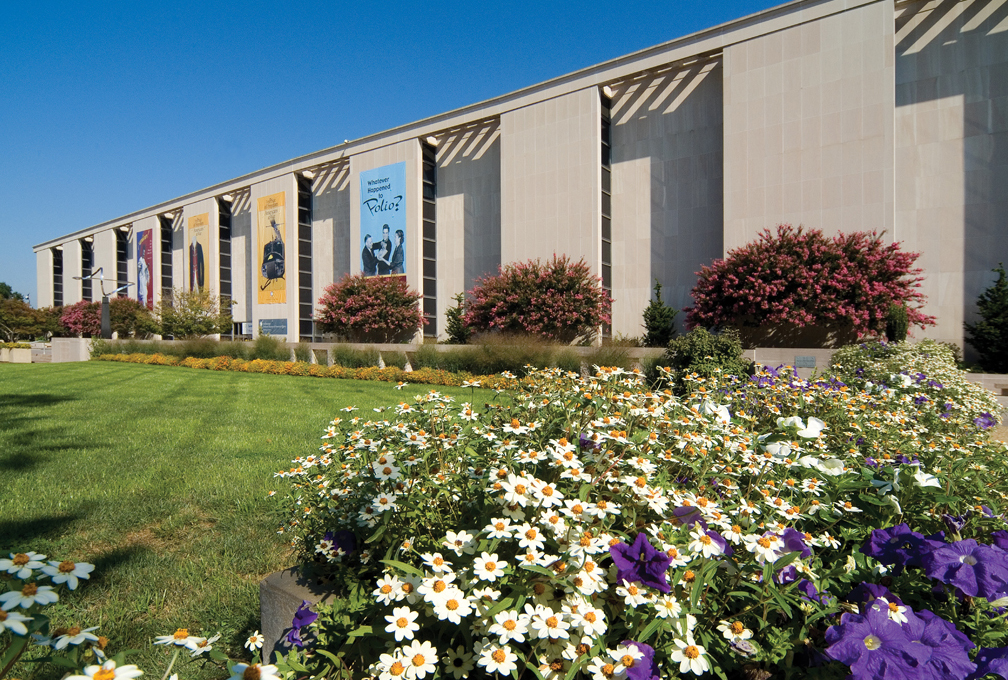Smithsonian Continues Collecting Artifacts From Jan. 6 Capitol Attack
To mark the one-year anniversary of the Jan. 6, 2021, attack on the U.S. Capitol, the Smithsonian’s National Museum of American History has announced it is continuing collecting efforts to document the day and its larger impact on American democracy.
The museum followed its rapid-response protocol on Jan. 7, 2021 to collect ephemeral materials such as rally signs, posters and flags, along with a whip and a wooden pole used as weapons, which were discarded on the National Mall. During the past year, curators from the Division of Political and Military History and the Photographic History Collection have collected additional materials that represent various aspects of the attack and its aftermath. Among those newly acquired artifacts are a black protective vest worn by freelance photographer Madeleine Kelly, which was slashed by a knife-wielding rioter, and her damaged media credentials; the blue suit worn by Rep. Andy Kim (D-N.J.) as he picked up debris in the Capitol building after the violence and destruction; National Guard insignia; and additional banners, signs and flags expressing support for then-President Donald Trump that were acquired through a veterans’ group that mounted a clean-up operation to remove trash, graffiti and stickers.
“The Jan. 6 attack on the Capitol, and on the foundation of the United States’ democratic republic, revealed the fragility of our political system,” said Anthea M. Hartig, the museum’s Elizabeth MacMillan Director. “As the nation’s flagship history museum, our staff is committed to documenting and, most importantly, preserving this history for future generations to understand how the events of that fraught day unfolded and to track their ongoing impacts.”
On Jan. 6, 2021, then-Vice President Mike Pence was to preside over the official process for counting the electoral college votes and certify Joe Biden as the winner of the 2020 presidential election during a joint session of Congress. This peaceful transfer of presidential authority, the mainstay of the American democracy since 1800, was intentionally interrupted as thousands of rioters, many carrying Trump banners and signs, violently broke through police security and entered the Capitol. This was the first time that the Capitol had been breached on a large scale since the War of 1812 when British troops attacked the city.
The National Guard insignia and other law-enforcement lapel pins and patches were donated by two Capitol Hill residents whose toddler son offered refreshments to troops and officers guarding the Capitol perimeter for 75 nights. “Operation Clean Sweep” was organized Jan. 10 by the veterans’ group “Continue to Serve” to clean up graffiti, trash and the vinyl stickers left on Washington lampposts and other metal objects by white nationalists and alt-right groups.
It has been challenging for the museum to collect and bring Jan. 6 artifacts into the building due to COVID-19 restrictions and because the events are the subject of an extensive investigation by the Select Committee to Investigate the January 6th Attack on the United States Capitol, as well as those by the FBI, the U.S. Capitol Police and numerous other law-enforcement agencies. As the museum’s work cannot interfere with such investigations, staff continue to monitor progress and remain in touch with federal agencies and congressional offices about possible collections. Curators also continue their discussions with photojournalists and freelance photographers about acquiring images that capture the events. As work is ongoing, there are no immediate plans for an exhibition.
New Digital Resource
The website, “Uncivil Religion: January 6, 2021,” to be launched by the University of Alabama’s Department of Religious Studies on the one-year anniversary in collaboration with the museum, features digital media (tweets, videos, photos and FBI files) associated with religious beliefs represented during the attack on the Capitol and interpretive essays written by a dozen international religious studies scholars. This is the first project under the auspices of the museum’s new Center for the Understanding of Religion in American History, which was announced in December 2020.
Through incomparable collections, rigorous research and dynamic public outreach, the National Museum of American History seeks to empower people to create a more just and compassionate future by examining, preserving and sharing the complexity of our past. The museum, located on Constitution Avenue N.W., between 12th and 14th streets, is open and admission is free. Hours and visit information are available online along with expanded offerings. The public can follow the museum on social media on Twitter, Instagram and Facebook. For more information, go to https://americanhistory.si.edu. For Smithsonian information, the public may call (202) 633-1000.
# # #
SI-381-2021

